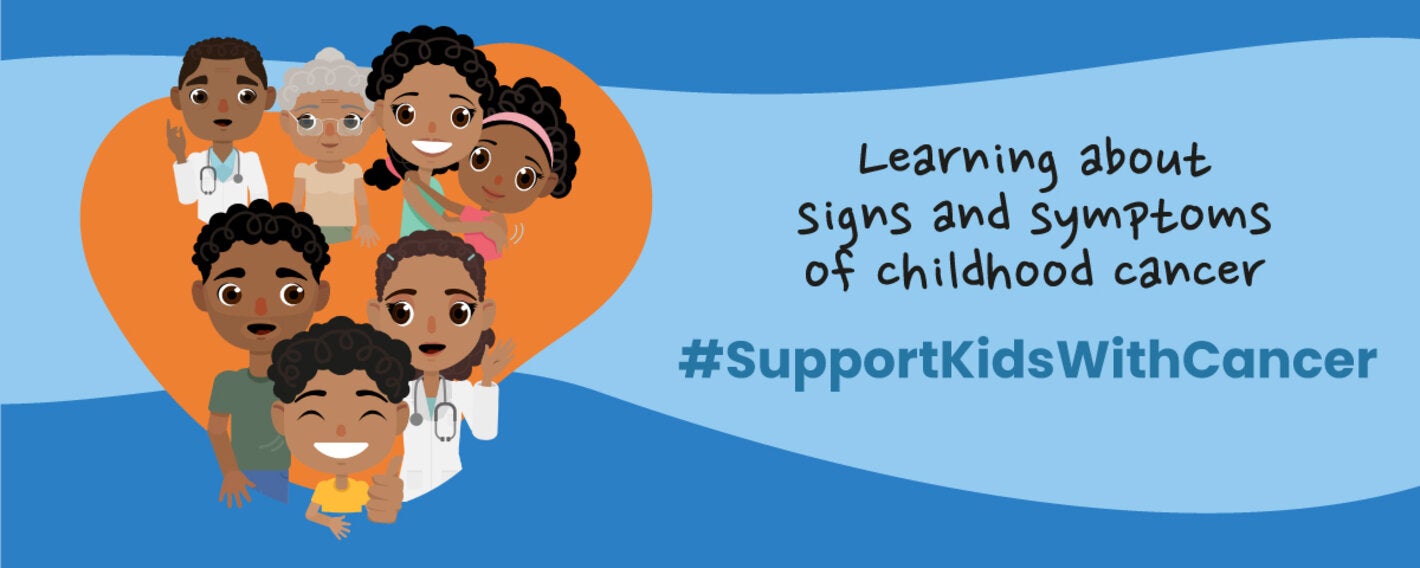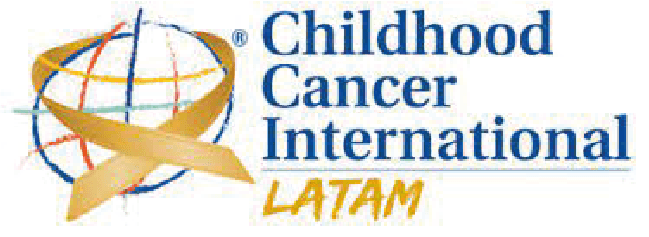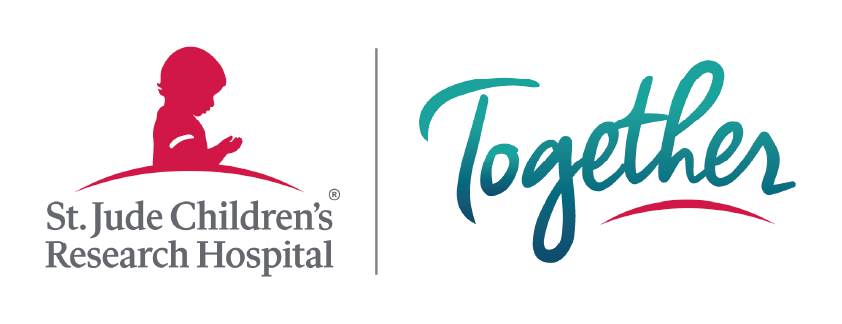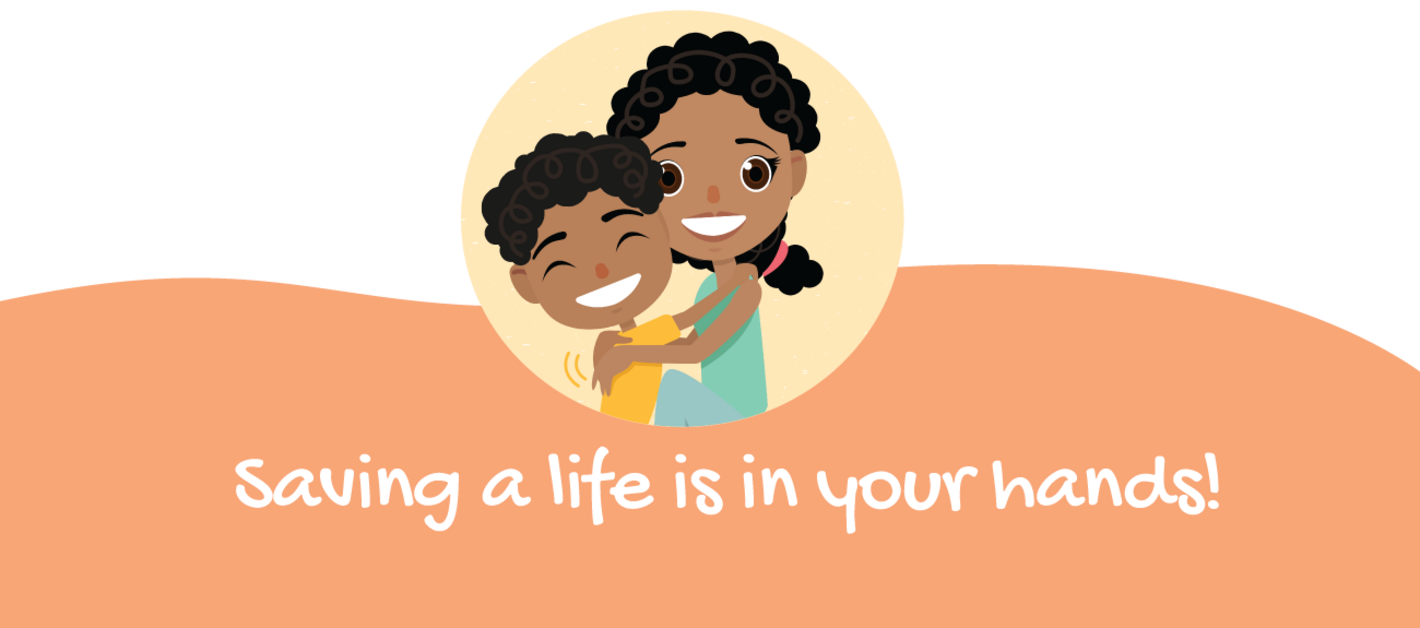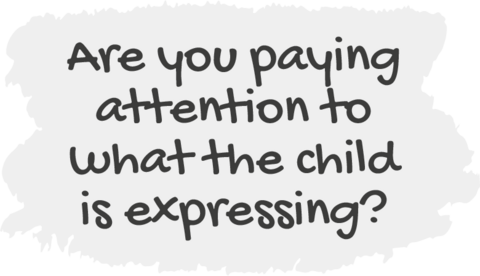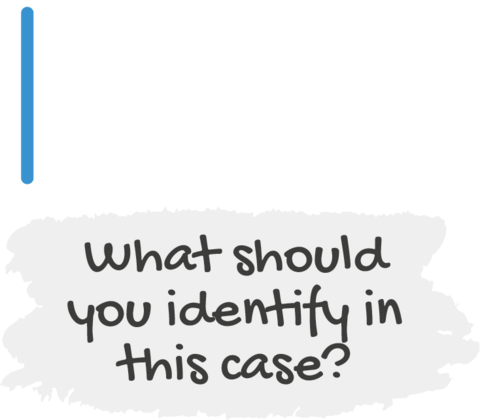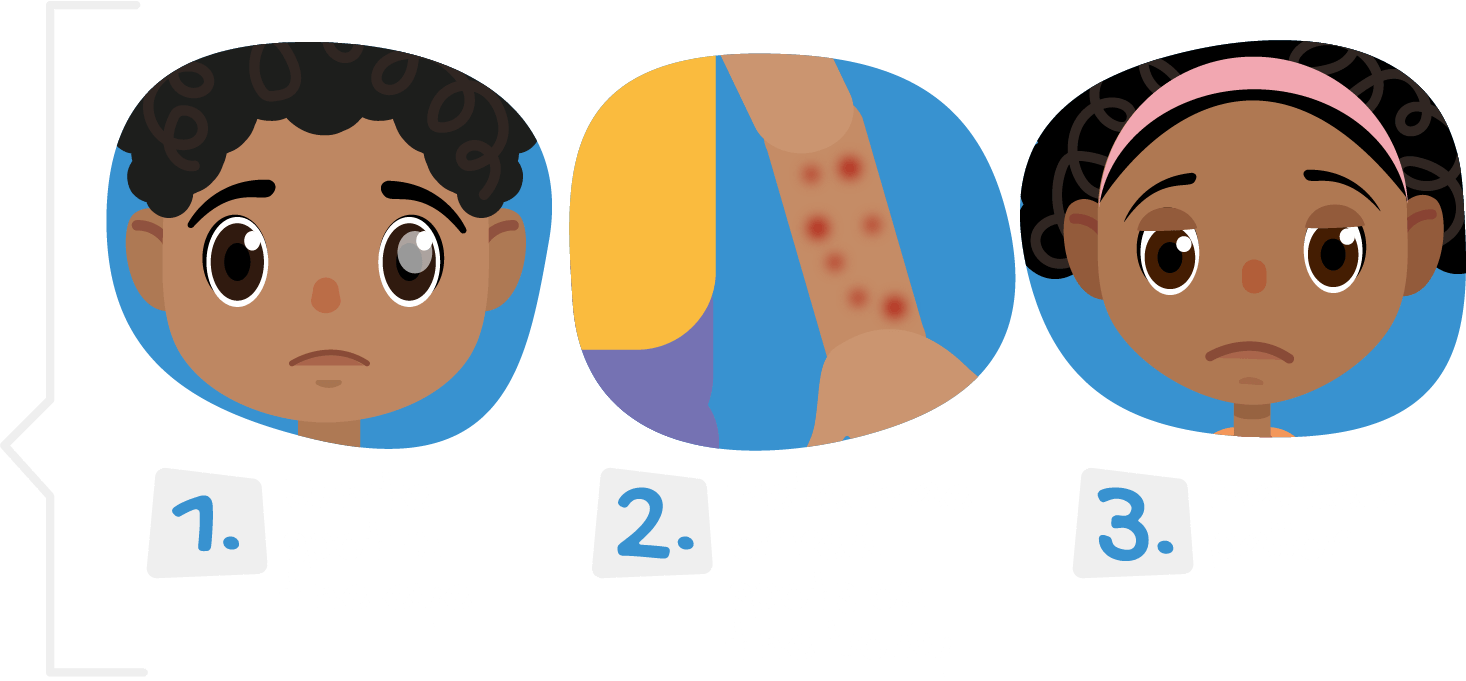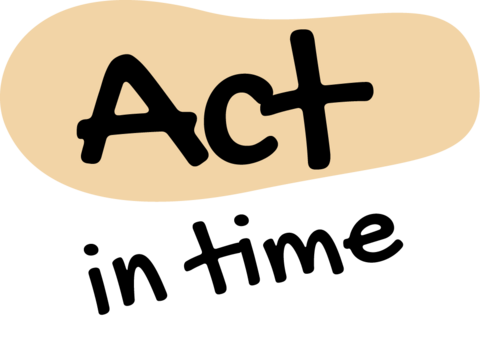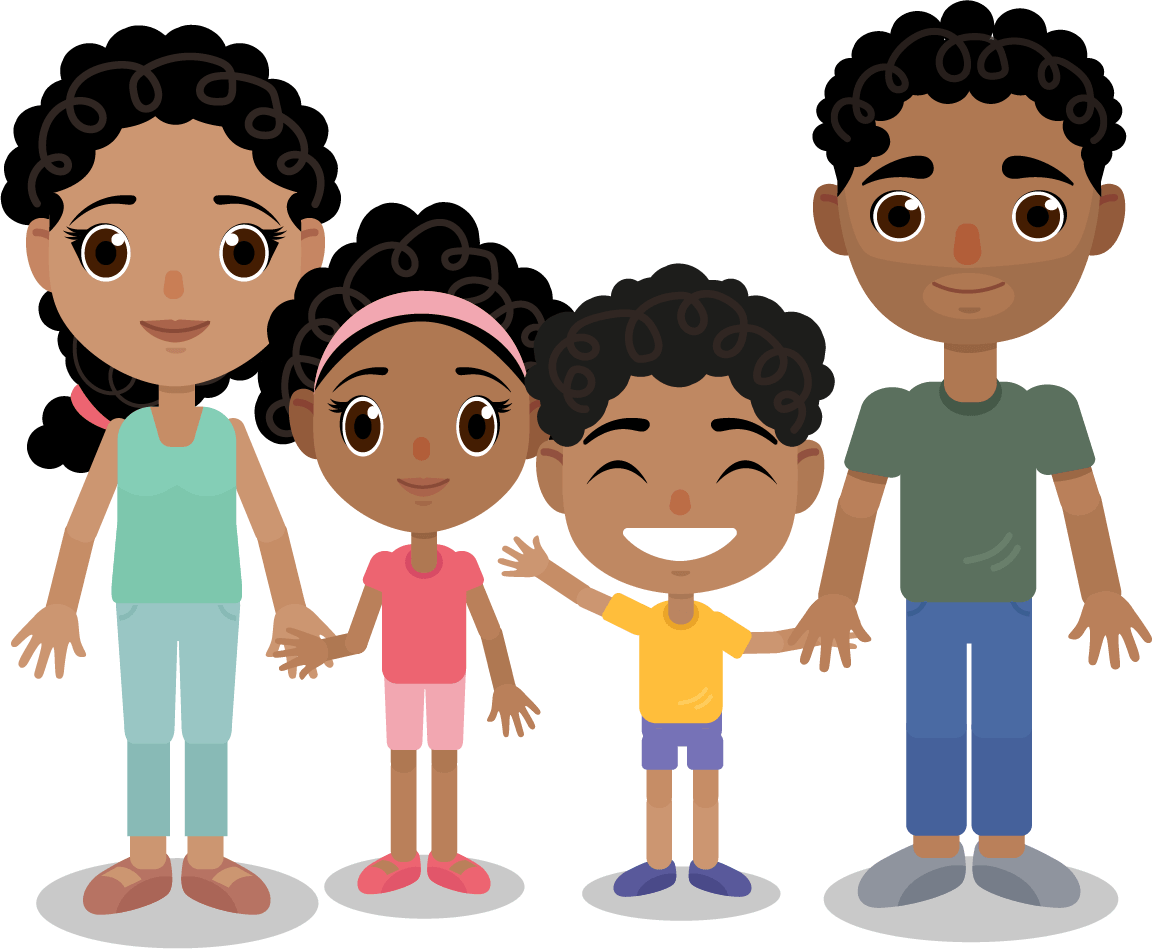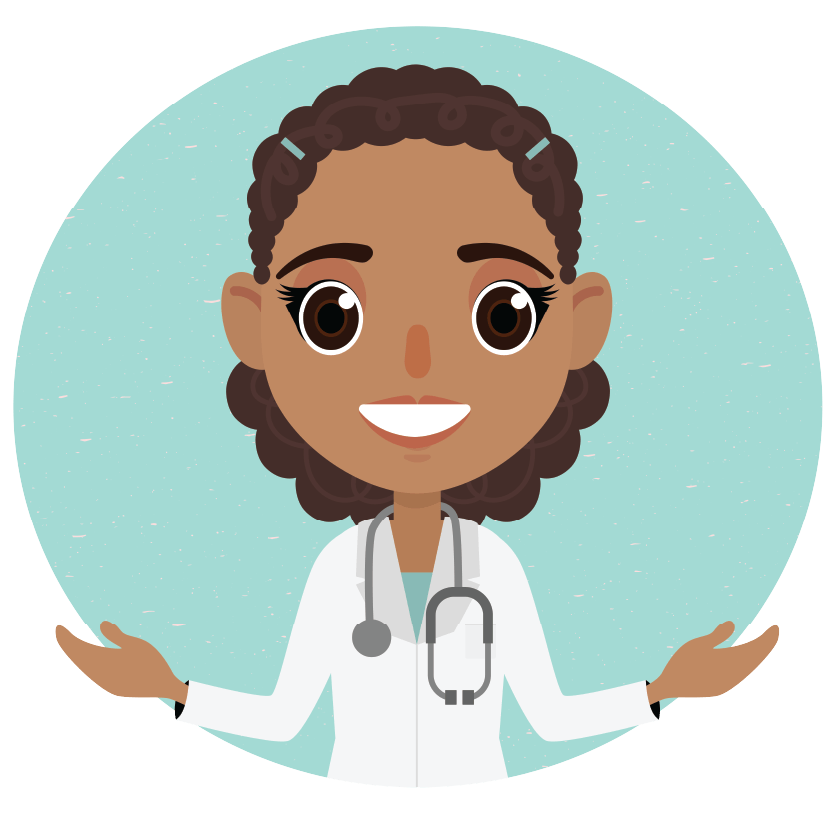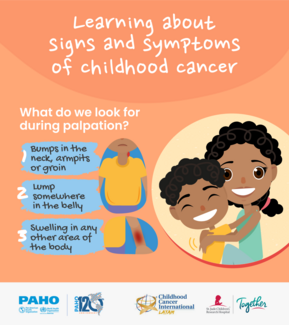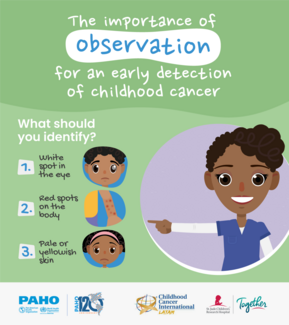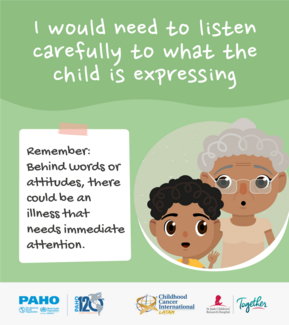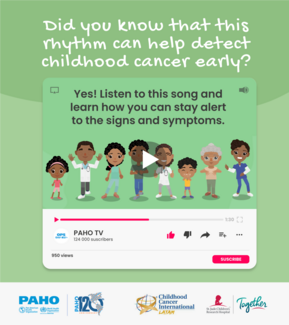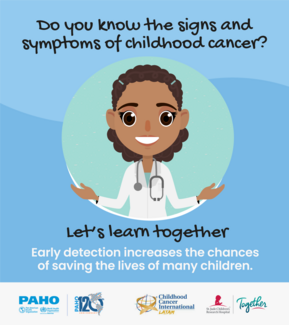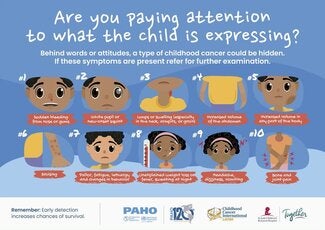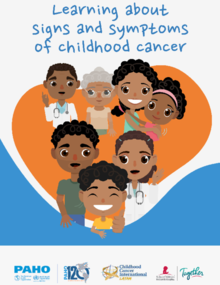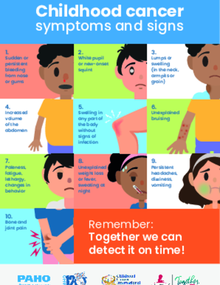Early diagnosis of childhood cancer saves lives
In pediatric cancer, a timely diagnosis and treatment are key to improving the chances of survival. In this task, parents, and caregivers, as well as the extended family and health personnel in general, play a very important role.
The Pan American Health Organization (PAHO), St Jude Together, and Childhood Cancer International are launching a Caribbean communication campaign to promote awareness in the early detection of symptoms and signs of cancer in children and adolescents. The campaign will also aim to reduce the time to diagnosis and treatment, improving survival.
But what are these signs and how to act when faced with them? In this campaign, you will learn the signs and symptoms that you should follow carefully in the child or adolescent in your care. We propose a simple and didactic way of learning so that this information can be easily internalized by everyone.
Be aware of the symptoms and signs of cancer in a child
Does the child or adolescent tell you?
- I am always tired and/or have no appetite.
- I have a persistent headache or vomiting (especially in the early morning or worsening over days).
- I have general bone pain.
Does the teacher tell you?
He/she is having changes in behavior, persistent fatigue or lethargy.
Be aware of:
- White pupil in the eye, new-onset squint, visual loss, bruising, or swelling around the eye(s).
- Pallor, bruising, or bleeding. Persistent cough or shortness of breath.
- Dizziness, loss of balance or coordination.
Check actively:
- The presence of lumps or swelling (especially in the neck, armpits, or groin). Pay attention if painless and without signs of infection.
- Abdominal swelling.
- Unexplained weight loss or fever.
The Rhythm that Gives us Life (lyrics)
This is the rhythm that gives us life,
This is the rhythm that gives us life.
Early detection of cancer in children.
Saves hundreds of lives every day.
If you see these symptoms in any of your loved ones.
Get to the doctor right away.
Look out for….
Headaches and fever.
White spots in your eyes.
You must pay attention,
Look out for the signs.
Paleness, swollen glands, or a lack of appetite.
Don’t waste time.
Head to the doctor.
That could save your child’s life!
This is the rhythm that gives us life.
Look for the symptoms, look for the signs
This is the rhythm that gives us life.
Look for the symptoms, look for the signs.
This is the rhythm that gives us life.
Early detection could save a child’s life.
Click on the play button (▶) to listen the audios, or download them by clicking on the download button (↓) at the top-right corner of the player
15 seconds version
30 seconds version
45 seconds version
60 seconds version
#SupportKidsWithCancer Campaign
1. What we are trying to achieve +
This regional communication and awareness campaign aims to improve awareness of the symptoms and signs of the most common types of pediatric cancer in Caribbean countries.
In Latin America, approximately 29,000 new cases of childhood cancer are registered each year, with a high mortality rate among less developed countries. In low- and middle-income countries, several factors such as late diagnosis, treatment-related toxicity, and treatment discontinuation contribute to higher childhood cancer mortality rates. In the Caribbean subregion, childhood cancer survival is lower than the regional average, due in large part to the lack of access to timely diagnosis and treatment and advanced disease.
According to the report of the II Subregional Meeting on Childhood Cancer in the Caribbean subregion (held virtually in October 2021), the main priority of the working group was the development of a subregional campaign to raise awareness of the symptoms and signs of the most frequent types of pediatric cancer.
For this purpose and within the Global Initiative against Childhood Cancer framework, the Pan American Health Organization (PAHO), St Jude Together, and Childhood Cancer International are launching a Caribbean communication campaign to promote awareness in the early detection of symptoms and signs of cancer in children and adolescents. The campaign will also aim to reduce the time to diagnosis and treatment, improving survival.
This campaign is focused on the following audiences:
- Communities, with emphasis on the following groups:
- Parents and caregivers of children and adolescents (0 to 19 years).
- Teachers and educators.
- Healthcare workers, with emphasis on primary care providers.
- Essential workers, community leaders, and decision-makers who will be utilized as target audiences and communication channels.
3. Key symptoms and signs of childhood cancer +
The Global Initiative against Childhood Cancer has prioritized six types of childhood cancer as tracers for implementing programs and monitoring progress in childhood cancer across the health system, as follows:
- Acute lymphoblastic leukemia
- Burkitt lymphoma
- Hodgkin lymphoma
- Wilms tumor
- Retinoblastoma
- Low-grade glioma (brain tumor)
All six cancers have unique characteristics and are highly curable with proven therapies, together representing 50–60% of all childhood cancers.
This regional communication and awareness campaign is aligned with the clinical presentation of these types of childhood cancer, which main symptoms and signs are:
- White pupil or new onset squint – suggestive of retinoblastoma.
- Headache, dizziness, vomiting, changes in behavior – suggestive of brain tumor.
- Increased volume of the abdomen – suggestive of Wilms tumor and other types of cancer (ovarian tumor, lymphoma, hepatoblastoma, neuroblastoma, sarcomas).
- Increased volume in any part of the body – suggestive of lymphoma, sarcomas.
- Sudden/persistent bleeding from nose or gums – suggestive of leukemia.
- Lumps or swelling (especially in the neck, armpits, or groin) – suggestive of lymphoma.
- Bruising or a rash of small red or purple spots that can't be explained – suggestive of leukemia.
- Pallor, fatigue, lethargy – suggestive of leukemia but common to several types of cancer.
- Unexplained weight loss or fever, sweating at night – suggestive of leukemia and lymphoma but common to several types of cancer.
- Bone and joint pain – suggestive of bone tumor, leukemia.
- Headache. Pain in the head.
- Hepatoblastoma. Cancer of the liver in children.
- Lethargy. Generalized sensation of tiredness, fatigue, physical and psychic weakness.
- Leukemia. Malignant disease of the bone marrow.
- Lymphadenopathy. Enlarged lymph nodes.
- Lymphoma. Neoplastic disease that develop in the lymphatic system.
- Neuroblastoma. Malignant tumor composed of neuroblasts, most commonly in the adrenal gland.
- Retinoblastoma. Cancer of the eye in children.
- Sarcoma. Malignant tumor of connective or other nonepithelial tissue.
- Squint. Deviation in the direction of the gaze of one eye.
- Tumor. An abnormal mass of body tissue. It can be benign (non-cancerous) or malignant (cancerous).
- White pupil or leukocoria. Reflex or white spot in the pupillary region.
- Wilms tumor. Cancer of the kidney in children.

